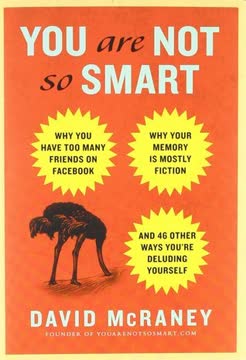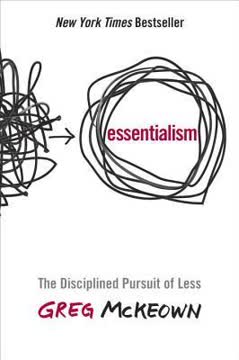Key Takeaways
1. Pressure is distinct from stress and can significantly impair performance
Pressure is more than a nemesis; it is a villain in our lives.
Pressure vs. stress. Pressure occurs when we perceive that something important depends on our performance. Unlike stress, which stems from feeling overwhelmed, pressure creates a "do-or-die" mentality. This distinction is crucial because pressure can severely impair our cognitive and physical abilities.
Impact on performance. Under pressure, individuals often perform below their capabilities:
- Cognitive skills: Judgment, decision-making, and memory are compromised
- Physical skills: Well-practiced behaviors become disjointed
- Emotional state: Anxiety and fear increase, leading to poor choices
Pressure situations share three common attributes:
- The outcome is important to you
- The outcome is uncertain
- You feel responsible for and judged on the outcome
2. Confidence acts as an antidote to pressure's negative effects
Confidence is often defined as the degree to which you believe you can influence a specific outcome, but for most of us it is a sureness of feeling that we can master the task at hand.
Confidence as protection. Confidence acts as a neurochemical antidote to pressure, allowing individuals to perform closer to their capabilities even when feeling anxious. It provides a sense of control and reduces the impact of pressure's physical and psychological manifestations.
Building confidence. To develop confidence:
- Accurately assess your current abilities
- Engage your brain using neuroscience findings (e.g., power poses, visualization)
- Develop confidence habits:
- Be at your physical best
- Take responsibility for your actions
- Find unorthodox ways to practice
- Seek constructive criticism
- Challenge the accuracy of your thoughts
3. Optimism enhances resilience and performance under pressure
Optimism helps us mainly because it spurs action. We don't engage in wishful thinking; we engage in hard work to find a resolution to the situation.
Benefits of optimism. Optimistic individuals:
- Earn greater pay and work harder
- Perform better in school and sports
- Bounce back quicker from setbacks
- Are more deeply engaged in their work
Optimism's dual nature. Optimism consists of two parts:
- Expectations: How we think the future will unfold
- Explanations: How we interpret past events
Balancing optimism with realism is crucial to avoid taking unnecessary risks while maintaining the drive to overcome challenges.
4. Tenacity is crucial for overcoming obstacles and achieving long-term goals
Nothing in the world can take the place of persistence. Talent will not; nothing is more common than unsuccessful men with talent. Genius will not; unrewarded genius is almost a proverb. Education will not; the world is full of educated derelicts. Persistence and determination alone are omnipotent.
Tenacity's components. Tenacity consists of four key elements:
- Goals: Meaningful objectives that energize and motivate
- Focus: The ability to concentrate on tasks that lead to goal achievement
- Hope: The belief that goals are attainable and obstacles are surmountable
- Coping: Strategies to manage stress, anxiety, and setbacks
Developing tenacity. To cultivate tenacity:
- Set energizing and meaningful goals
- Practice focusing through concentration exercises
- Cultivate hope by identifying multiple pathways to your goals
- Reframe obstacles as opportunities for growth and learning
5. Enthusiasm is contagious and vital for team success in high-pressure situations
We have found that on a team what matters is one person. That is what we found predicted success. He or she listens, asks questions, and then moves on to the next person, infecting them with enthusiasm.
Power of enthusiasm. Enthusiasm:
- Unlocks creativity and builds team cohesion
- Develops long-term resilience
- Increases working memory and ability to see connections
- Is contagious, spreading positive emotions throughout a team
Cultivating enthusiasm. To increase enthusiasm:
- Connect to a larger purpose or "why" behind your work
- Foster social connections within your team
- Practice expressing positive emotions through body language and tone
- Celebrate small wins and progress towards goals
6. Choking under pressure is caused by disrupted memory systems
Choking occurs when a well-rehearsed skill fails; because the person brings self-conscious thinking—"how am I doing?"—to the critical moment he or she has to perform.
Two memory systems. Choking involves disruption of two memory systems:
- Working memory: Stores information needed for judgment and decision-making
- Procedural memory: Responsible for well-practiced, automatic skills
Causes of choking. Choking occurs when:
- Working memory is overtaxed by worry or self-doubt, leaving insufficient capacity for the task
- Procedural memory is disrupted by excessive self-focus, interfering with automatic execution of skills
To prevent choking:
- Manage anxiety and self-doubt to protect working memory
- Avoid overthinking well-practiced skills in crucial moments
7. Pressure solutions can help manage acute pressure situations
Pressure solutions immunize you to the pressure of the moment because, in one way or another, they: Reduce feelings of anxiety, stress, fear, embarrassment; Avoid distraction; Regulate your arousal; Guide your behavior; Help you focus on what helps you
Short-term strategies. Pressure solutions are immediate techniques to manage high-pressure moments. Some effective solutions include:
- Befriend the moment: View pressure as a challenge or opportunity
- Anticipate, anticipate, anticipate: Expect and prepare for the unexpected
- Affirm your self-worth: Acknowledge your positive qualities and experiences
- Use your positive GPS system: Cultivate positive thoughts and expectations
- Tune into your senses: Stay grounded in the present moment
- Focus on what you can control: Direct energy towards actionable elements
These solutions help regulate emotions, maintain focus, and optimize performance in pressure situations.
8. Building a COTE of Armor (Confidence, Optimism, Tenacity, Enthusiasm) provides long-term pressure management
If you were to ask, "What are the personality attributes of the most accomplished individuals, those who enjoy the greatest mental and physical health, are engaged in positive relationships, and experience the most joy in life?" What are the attributes of individuals who can play their best under pressure? The answer is the aforementioned characteristics.
COTE of Armor. Developing these four attributes creates a psychological shield against pressure:
- Confidence: Belief in one's ability to influence outcomes
- Optimism: Positive expectations and explanations of events
- Tenacity: Persistence in pursuing goals despite obstacles
- Enthusiasm: Energetic engagement and positive emotional contagion
Long-term benefits. Cultivating these attributes:
- Enhances resilience to pressure over time
- Improves overall well-being and life satisfaction
- Boosts performance in various domains (work, relationships, personal growth)
9. Accurate self-assessment and neurochemistry play key roles in confidence
Being overconfident or needlessly underconfident can make it difficult to develop self-confidence and perform at your best.
Accurate self-assessment. To build genuine confidence:
- Use feedback from others to counteract cognitive biases
- Employ benchmarks to measure progress objectively
- Practice humility to remain open to learning and improvement
Neurochemistry of confidence. Key factors:
- Higher testosterone levels: Increase motivation and risk-taking
- Lower cortisol levels: Reduce anxiety and stress
- Strategies to influence neurochemistry:
- Use power poses to boost testosterone
- Practice visualization to activate the "winner effect"
- Celebrate micro-successes to stimulate positive neurochemical responses
10. Realistic optimism balances positive expectations with pragmatism
Optimism's relationship to time is dynamic and constantly shifting. Whereas confidence shows up in the moment—providing a foundation of belief or knowledge that we can execute the behavior or task that is required of us—optimism is more about what happens on either side of the moment: in the future and in the past.
Balancing optimism. Realistic optimism involves:
- Maintaining positive expectations while acknowledging potential challenges
- Explaining past events in a constructive manner without ignoring lessons
- Avoiding excessive risk-taking while remaining open to opportunities
Cultivating realistic optimism:
- Develop an optimistic vocabulary
- Adopt the belief that the world is generally fair
- Appreciate the world around you
- Practice explaining life events optimistically
- Use a personal "board of directors" for perspective and feedback
11. Tenacity involves goal-setting, focus, hope, and effective coping strategies
Tenacity requires motivation and effort, so your first step is to create a reservoir of energy to draw on.
Components of tenacity:
- Goal-setting: Establish meaningful, challenging objectives
- Focus: Develop the ability to concentrate on relevant tasks
- Hope: Cultivate belief in goal attainability and multiple pathways
- Coping: Employ strategies to manage stress and setbacks
Developing tenacity:
- Energize yourself with meaningful goals
- Practice short-term and long-term focus
- Be adaptable and look for multiple pathways to success
- Reframe obstacles as opportunities for growth
- Create and practice pre-performance routines
- Manage decision fatigue and maintain glucose levels
- Connect to a larger purpose or "why" behind your efforts
Last updated:
FAQ
What's Performing Under Pressure about?
- Focus on Performance: The book delves into how individuals can excel in high-pressure situations, using insights from psychology, sports, and neuroscience.
- Understanding Pressure: It distinguishes between pressure and stress, highlighting that pressure involves critical situations where performance is judged.
- COTE of Armor: Introduces the concept of building a "COTE of Armor"—Confidence, Optimism, Tenacity, and Enthusiasm—to manage pressure effectively.
Why should I read Performing Under Pressure?
- Practical Strategies: Offers 22 actionable solutions for handling pressure in various scenarios, from work to personal challenges.
- Research-Based Insights: Combines extensive research with real-life examples, making the content relatable and scientifically grounded.
- Enhance Performance: Teaches readers how to manage their responses to pressure, improving success in critical moments.
What are the key takeaways of Performing Under Pressure?
- Pressure vs. Stress: Understanding the difference is crucial for effective performance; pressure has significant consequences, unlike general stress.
- Cognitive Appraisal: How you interpret pressure moments can affect performance; viewing them as challenges can enhance success.
- Pressure Solutions: Strategies like "Befriend the Moment" and "Focus on the Mission" help navigate high-pressure situations.
What is the COTE of Armor in Performing Under Pressure?
- Four Key Attributes: COTE stands for Confidence, Optimism, Tenacity, and Enthusiasm, essential for managing pressure.
- Building Resilience: Developing these attributes helps withstand pressure and perform closer to one's capabilities.
- Long-Term Strategy: Cultivating a COTE of Armor is a long-term approach to consistently achieving success in high-pressure moments.
How does Performing Under Pressure define pressure?
- Critical Situations: Pressure is defined as moments where stakes are high, outcomes are uncertain, and performance is judged.
- Physiological and Psychological Effects: Discusses how pressure affects cognitive functions, impairing judgment and decision-making.
- Evolutionary Perspective: Explains that pressure evolved to determine success or failure, impacting modern performance.
What are some pressure solutions mentioned in Performing Under Pressure?
- Befriend the Moment: Encourages viewing pressure situations as challenges, enhancing performance.
- Anticipate the Unexpected: Preparing for surprises reduces anxiety and maintains composure.
- Slow Down Your Response: Taking time to think before reacting helps manage anxiety and improve decision-making.
How can cognitive appraisal affect performance under pressure according to Performing Under Pressure?
- Influences Perception: Determines whether a situation is seen as a crisis or challenge, impacting emotional response.
- Affects Decision-Making: Positive appraisals lead to better focus and performance; negative ones increase anxiety.
- Changeable Nature: Appraisals can change with mindset and preparation, allowing better pressure management.
What is the difference between pressure and stress according to Performing Under Pressure?
- Pressure is Specific: Refers to moments where performance is critical, unlike general stress.
- Consequences Matter: Pressure situations often have significant consequences, distinct from everyday stressors.
- Management Strategies: Understanding this difference is key to applying the right strategies for managing pressure.
How does Performing Under Pressure suggest managing pressure in relationships?
- Communication is Key: Emphasizes managing pressure in conversations to prevent conflicts and strengthen relationships.
- Awareness of Pressure: Recognizing pressure's effects on interactions helps respond effectively and empathetically.
- Supportive Environment: Creating acceptance reduces pressure and improves communication dynamics.
How does confidence act as an antidote to pressure in Performing Under Pressure?
- Reduces Anxiety: Confidence mitigates anxiety and self-doubt, allowing closer performance to one's best.
- Encourages Positive Thinking: A confident mindset views challenges as opportunities, improving decision-making.
- Promotes Resilience: Fosters resilience, enabling focus on goals despite setbacks.
What role does optimism play in performing under pressure according to Performing Under Pressure?
- Positive Expectations: Optimism reduces anxiety and increases motivation, encouraging risk-taking and engagement.
- Explanatory Style: An optimistic style views setbacks as temporary, enhancing resilience and motivation.
- Long-Term Benefits: Linked to better health, relationships, and success, optimism leads to a fulfilling life.
What are the best quotes from Performing Under Pressure and what do they mean?
- “Pressure is the enemy of success.”: Highlights that unmanaged pressure can undermine performance.
- “You can’t do magically better than you have before.”: Stresses realistic expectations under pressure.
- “Man is not troubled by events but rather how he interprets them.”: Emphasizes cognitive appraisal's power in shaping pressure responses.
Review Summary
Performing Under Pressure offers research-based strategies for managing stress and improving performance in high-pressure situations. Readers appreciate its scientific approach, practical tips, and dispelling of myths about thriving under pressure. The book explains how pressure differs from stress and provides tools to handle pressure effectively. While some found it lengthy, many praised its insights on confidence, optimism, and reframing pressure situations. The book's advice is applicable to various fields, from sports to business, and is considered valuable for anyone facing pressure in their lives.
Similar Books










Download PDF
Download EPUB
.epub digital book format is ideal for reading ebooks on phones, tablets, and e-readers.




